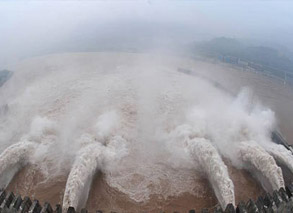Higher bank reserve ratio takes effect
2010-02-25 11:39 BJT
The central bank has raised the amount that lenders must keep as reserves twice so far this year. The second hike of 50 basis points was announced almost 2 weeks ago just before the start of the one-week break for the Spring Festival. But it takes effect Thursday this week. Feng Ling reports on how analysts are interpreting this recent move by the People's Bank of China.
The bank's reserve requirement ratio now stands at 16.5 percent for big banks and 14.5 percent for small and medium sized banks. Based on the 62 trillion yuan balance in banks as of the end of January, the hike will freeze up 300 billion yuan in liquidity.
Experts say compared to the last hike, when the central bank unexpectedly raised the reserve requirement in January, February's latest move should not surprise the market and should be considered a necessary adjustment of liquidity.
Liu Yihui, China Academy of Social Sciences, said, "The central bank injected 700 billion yuan into the market in the four weeks leading up to the spring festival. And 900 billion yuan central bank bills will be due before the end of March. Taken together, it means the central bank will inject 1.6 trillion yuan in total. So it needs to withdraw some liquidity."
The first month of the year saw 1.4 trillion yuan in new loans being issued, lower than the 1.6 trillion logged in the same month last year. Experts say reasonable control of liquidity in the banking system will curb lending. It will certainly put a lid on excessive loans being granted at the end of the quarter, meaning a better balance in lending across the months.
It is the second time this year that the People's Bank of China has adjusted the amount of deposits that commercial banks must keep on reserve. It raised the reserve requirement for the first time on January 18 by 50 basic points to 16 percent.
Editor: Zhang Ning | Source: CCTV.com
 Mail
Mail Share
Share Print
Print


 Video
Video









 2009 China Central Television. All Rights Reserved
2009 China Central Television. All Rights Reserved